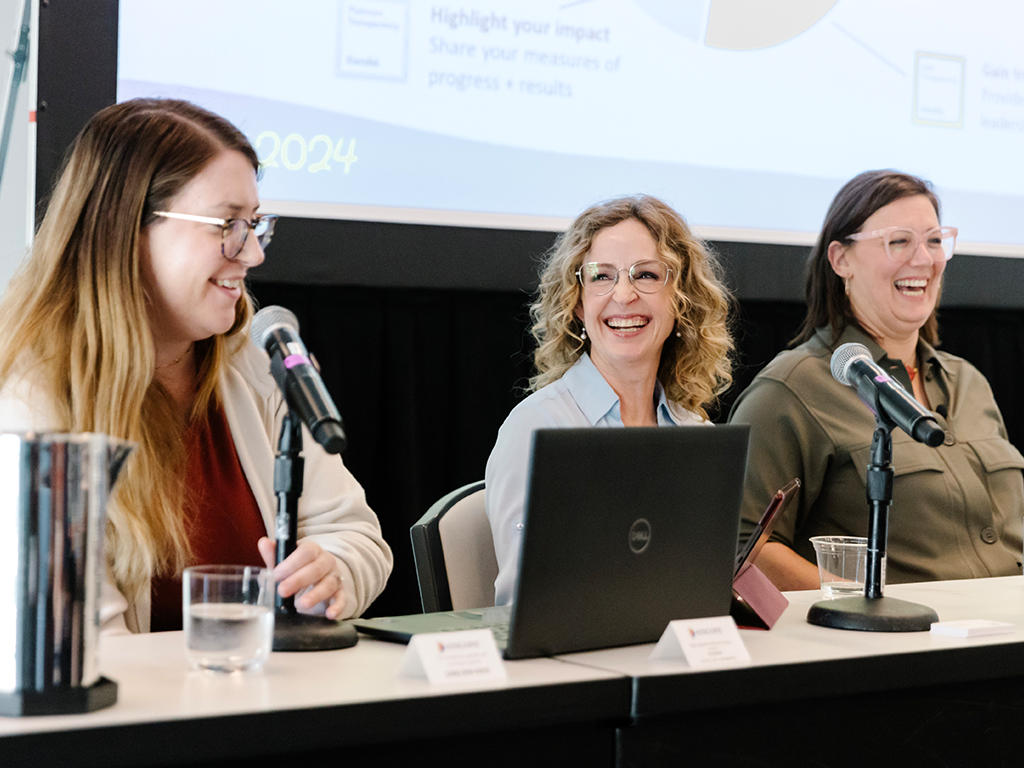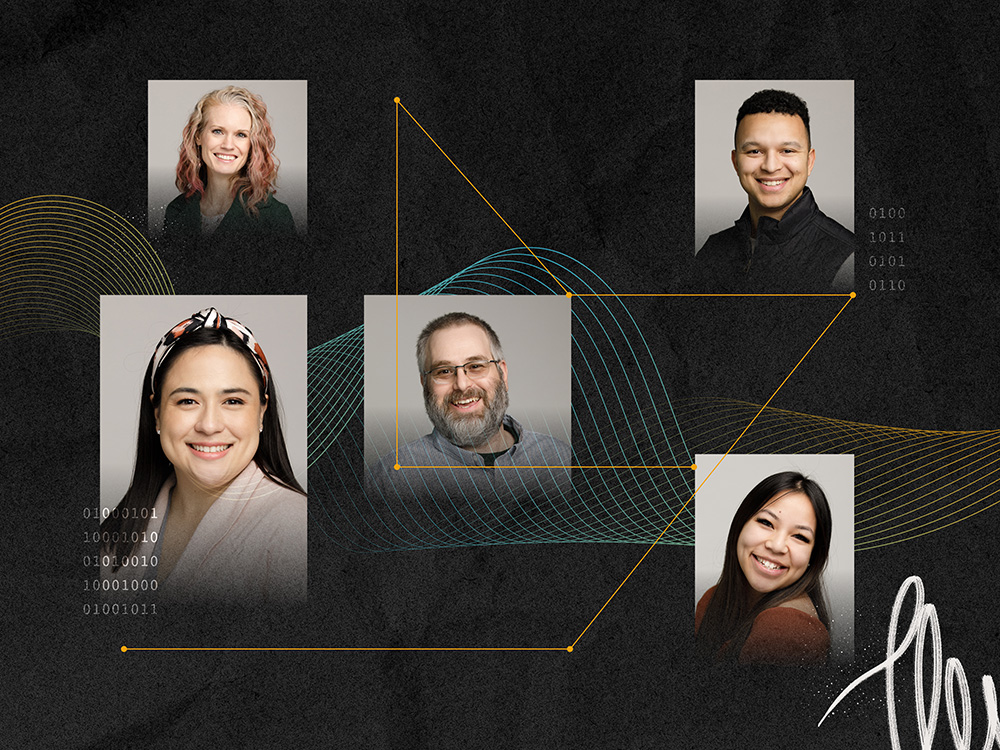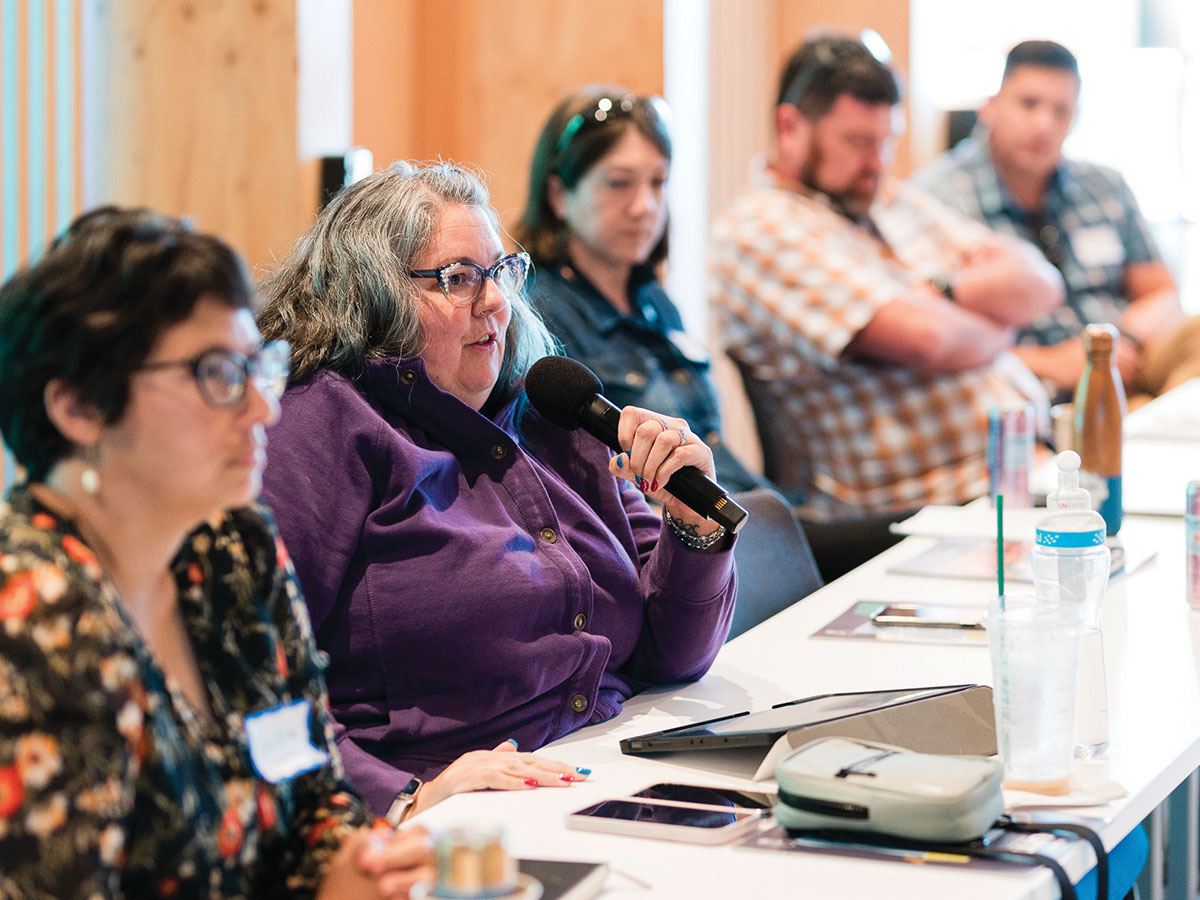
In the CONNECT online community, PEAK Grantmaking members generously share their insights and approaches to grantmaking, recently contributing to a rich discussion about how to collect and leverage grantee demographic data. With their permission, we’re sharing some of the discussion highlights here.
Understand your purpose for demographic data collection
Funders are increasingly collecting and tracking grantee demographic data. Before determining a plan for demographic data collection, Russell Johnson, president and CEO of HealthSpark Foundation emphasized that it’s critical to first ask, “what are you [as a foundation] intending to do with this information?”
Lauren Howe, program administrator at Healthy Food for Denver’s Kids, noted that collecting demographic data is necessary so that they can track and ensure that their investments are reaching the populations intended. Understanding the larger social context of food insecurity was key, to confirm that the grants would go to the communities most disproportionately affected by the issues they seek to address.
Learn more in our How-To Guide | How to Get Started with Demographic Data.
Determine what will be done with the data
According to John Bateman, executive director at the Starkville Area Arts Council, funders should have detailed conversations around how they will use that data, especially when asking for more data than necessary can place an unnecessary burden on nonprofits. Those conversations will help the funder identify critical, meaningful action steps to take in response to that data. In other words, don’t collect data just to sit on it. Resultant actions can include adjusting grantmaking or having conversations with grantees. To get the ball rolling, he suggested a few key internal questions: Will data be used to ensure diversity and inclusion in your grantmaking? If so, how are you planning to adjust and respond? Are you using this to foster diversity and inclusion in grantees? If so, how are those discussions being handled?
Other questions to consider include: How is our current portfolio aligned with our values around diversity, equity, and inclusion? What can and should we change so that they are more aligned?
To help organizations think critically about data through a diversity, equity, and inclusion lens, Suki O’Kane, administrative director at the Walter and Elise Haas Fund recommended Charles and Lynn Schusterman Family Philanthropies Guide Toward DEI in Data Collection.
Learn more by reading Demographic Data Collection: A Tool For Change.
Find the right technology for all constituents
In selecting technology to track demographic data, it is important to consider what data analysis and usage will look like. It is also important to consider who will be presenting the data, and what decisions will be made from it. Considering all participants in the process is integral, including grantees, foundation staff, and board members. Different technologies can be used for different sides of the process—for example, Google Forms, Google Sheets, or Survey Monkey can be used for data collection. For tracking and managing data, some members use premium platforms such as Foundant or the BluePrint Module within the Blackbaud Grantmaking management system which, according to Mott Philanthropic grants manager Paula Lentoni, is useful at the organizational coding level and allows her to easily run searches.
Build in space for grantee feedback
In collecting demographic data from grantees, offering time and space for continual feedback from applicants is key. Different nonprofit organizations have varying levels of comfort and accessibility with demographic data. PEAK encourages funders to streamline grant application processes and requirements for equity and efficiency. Regarding grantee feedback, Karen Carlton, the administrative and communications coordinator at Laughing Gull Foundation, shared that while some grantees already collect demographic data, and do not give the foundation feedback on their application process, , other grantees shared feedback that it is significantly more difficult to collect any demographic data. This challenge can be due to data restrictions for vulnerable populations – for example, minors who are incarcerated – or bureaucratic hurdles in partner institutions. Consequently, having an open line of communication with grantees around their limitations with collecting this data is a good practice in maintaining strong funder-grantee relationships. Be open to feedback and other methods for ensuring you get the data you need while giving due consideration of the applicant’s unique circumstances.
Understand the limitations
When collecting this sensitive information, it is imperative to consider the limitations and hesitations that come with demographic data tracking. Logan Benton, grants manager at the National Harm Reduction Coalition, shares that they do not collect demographic information due to the nature of the work of their grantees, which can involve the distribution of harm reduction and safer sex supplies and screenings for HIV and hepatitis C. In discussing this decision with grantees, some reported strong hesitance in demographic data collection and indicated that they would return funds if that was a grant requirement.
Isabella Gargiulo, grants manager and program officer at Argosy Foundation highlighted that funders should consider some of the potential stigmas included in some of these disclosures. “I think sometimes in our zeal to collect this information, we may be unintentionally trespassing certain personal boundaries depending on the type of info we are collecting,” she commented. “When we request an organization to disclose who in their ranks is, for example, transgender or has been incarcerated, we must keep in mind that some of these issues are mired in stigma. Folks may not only be unwilling to make disclosures, but they may feel like they are being forced to do so under the unspoken pressure of a funding declination. Whenever we ask for these kinds of data, we should always include a field for ‘would rather not disclose’ or ‘unknown.’”
Lauren Howe added on to say that her organization navigates these challenges by creating surveys that are tailored to each grantee’s unique situational challenges. Data is collected on a quarterly basis in an estimated, aggregate form. “Collecting demographic data is also a struggle considering some of the fear and mistrust with accessing social services, for example, immigrants who fear being legally classified as a public charge,” Howe writes. “Several of our grantees do not regularly collect demographic data because they don’t want to discourage their community members from accessing the services, especially in immigrant communities.”
In addition, grantmakers may also need to account for how a crisis situation might impact an organization’s ability to collect and track data. Looking at the COVID-19 pandemic as an example, many service providers have shifted to virtual services and grab-and-go offerings, which are more difficult to track.
Join the conversation
Participate in the CONNECT online community – open to all PEAK members – to share your advice and offer solutions for challenges that so many funders are facing.
Not a member? Explore the benefits of joining PEAK’s powerful network of grants management professionals as a contributing Organization Member or through a complimentary Individual Membership.



